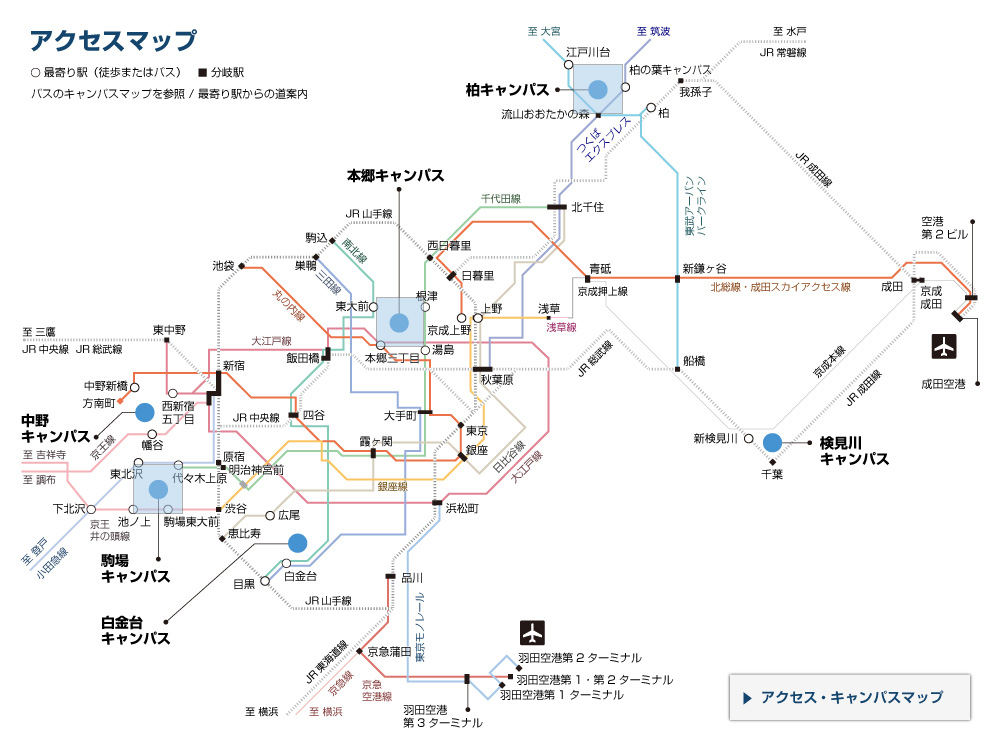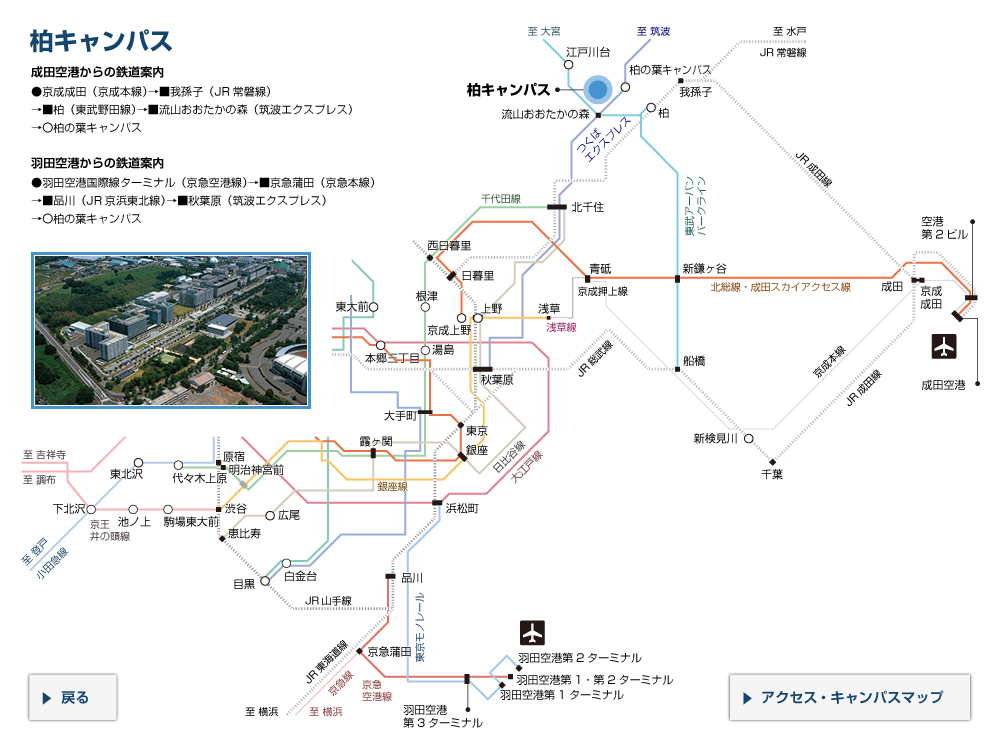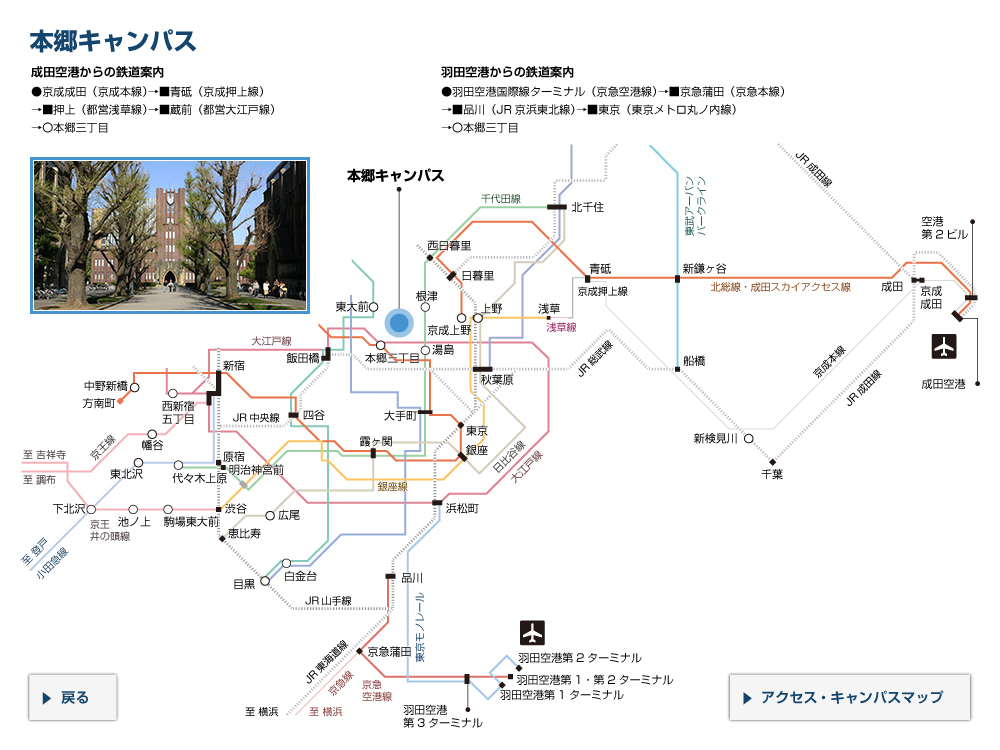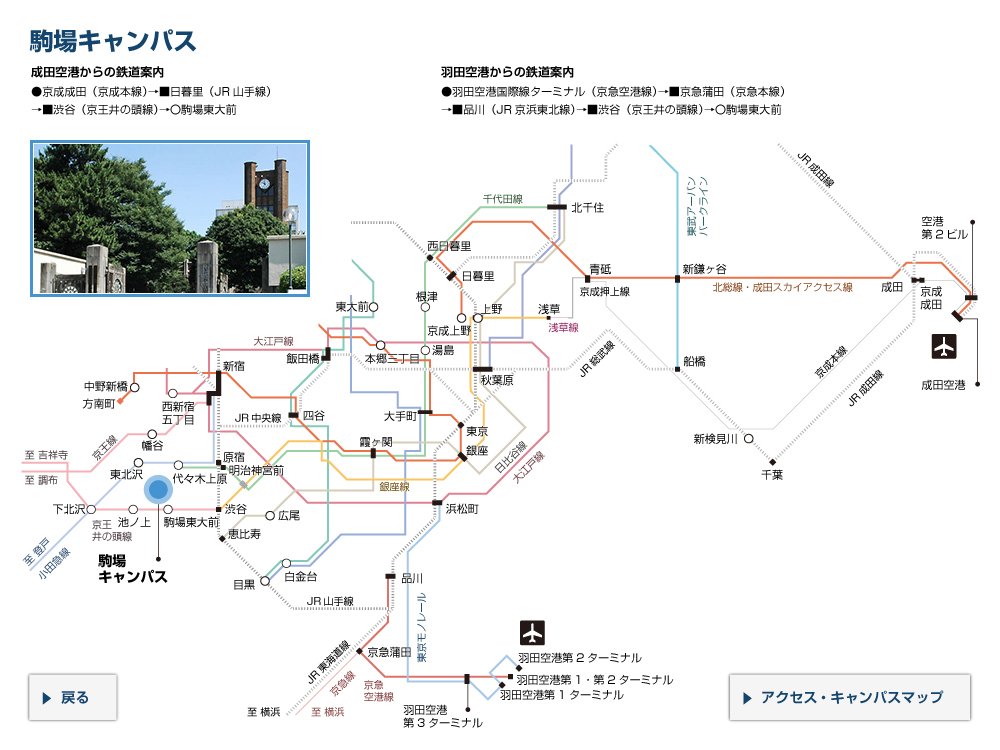平成29年度秋季入学式総長式辞
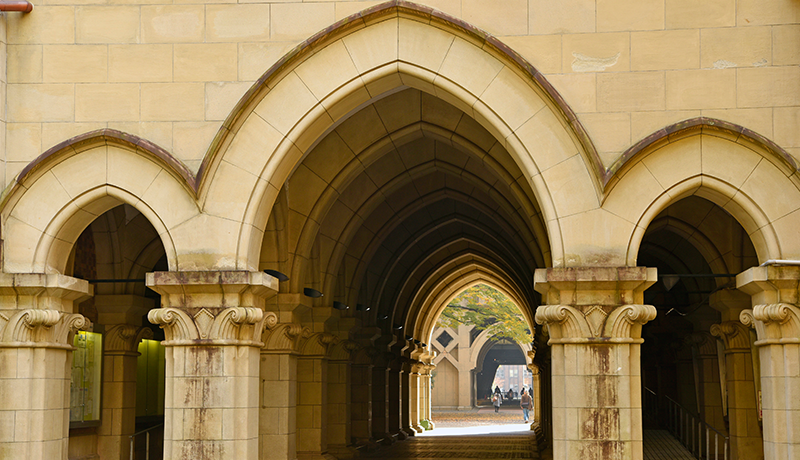

式辞・告辞集 平成29年度秋季入学式 総長式辞
Address by the President of the University of Tokyo
at the 2017 Autumn Matriculation Ceremony
Welcome to the University of Tokyo. On behalf of the University, I would like to extend our sincere congratulations to you. I would also like to congratulate your families, who have supported you through your studies, and are present here today to join in this celebration.
The total number of new students entering our Graduate Schools this autumn is 760. Of these, 432 are joining master’s programs, 278 are joining doctoral programs, and 50 are joining professional degree programs. At our Undergraduate Faculties, 23 students are enrolling in Programs in English at Komaba, or PEAK, an English-language degree program. Also, 5 students are entering the Global Science Course of the Faculty of Science, an English-language transfer program for those who started their study at foreign universities.
All of you must be eager to take on new challenges in research and study at the University of Tokyo. In terms of size, the range of academic disciplines, and the level of research activity, the University of Tokyo is one of the world’s leading universities. I would like you to make the best use of our outstanding academic environment to expand and realize your dreams. You will have full support from all our staff at the University.
* * *
This April, the University of Tokyo celebrated its 140th anniversary. The University was established in 1877, created by merging Tokyo Kaisei School and Tokyo Medical School.
The first half of those 140 years coincided with the modernization of Japan, which began with the opening of the country to the world. During this period, the University of Tokyo cultivated a unique environment for incorporating both Eastern and Western scholarship, and contributed to Japanese society by producing future leaders.
The second 70 years started with the physical and social reconstruction of Japan after World War II. The University has confirmed its commitment to building a peaceful and democratic society. Our alumni are highly-educated professionals working in all areas of society.
The University has faced tough challenges on many occasions over the past 140 years. For instance, many of the University’s buildings were destroyed or burned down during the 1923 Great Kanto Earthquake. The symbol of our scholarship, the old university library, was also destroyed. A donation from the Rockefeller Foundation helped to build the library that stands on this campus today. This Yasuda Auditorium was built in 1925, two years after the earthquake, thanks to a donation from the late Zenjiro Yasuda. The University of Tokyo has received much goodwill from many people both in Japan and abroad.
* * *
The Great Kanto Earthquake destroyed over 370,000 buildings. More than 100,000 people lost their lives. Newspapers, which provided fact-based news to the public, were completely destroyed. In this vacuum, baseless rumors spread quickly from person to person, bringing chaos to the lives of many people. This history shows us that the “fake news” of lies and hate that we now often hear is not new. The University of Tokyo started an initiative for the academic study of newspapers in the late 1920s. This was partly because of the lessons learned in the aftermath of the earthquake.
But this initiative to create a new academic discipline did not start smoothly. Back then, newspapers were not seen as a suitable subject for academic research. Some people questioned whether it was appropriate to have such a research center at the University. Professor Hideo Ono, who had once worked as a newspaper reporter and was teaching in the Faculty of Letters, was very aware of the importance of studying newspapers. Professor Ono worked tirelessly with other like-minded people to gain the support of businesses and newspaper companies. Their efforts led to the creation of a Research Department for Journalism Studies in the Faculty of Letters in 1929.
The Meiji Newspaper and Periodical Archives (Meiji Shinbun Zasshi Bunko) which was established in the Faculty of Law in 1927, was also important. This unique library was established by the Study Group on Meiji Culture (Meiji Bunka Kenkyukai). A diverse group of researchers created the society to carry out a comprehensive study of Meiji culture. Sakuzo Yoshino, a former professor of the Faculty of Law and a leading figure of Taisho Democracy, was a member. He and other experts worried about the loss of modern historical documents in the earthquake. With donations from the business community, they created the archives to preserve newspapers, magazines, and other fragile materials.
In 1949, four years after the end of World War II, University President Shigeru Nanbara launched the Institute of Journalism and Communication Studies. As a political scientist, Professor Nanbara believed that the University should contribute to creating the theoretical framework for a new journalism suited to a democratic postwar Japan. The Institute served as a hub of communications studies covering newspapers and broadcasting, and nurtured many scholars in the field. Later, as the information revolution proceeded, it was reorganized as the Institute of Socio-information and Communication Studies, and finally integrated into the Graduate School of Interdisciplinary Information Studies in 2004. This graduate school now studies the latest developments in social and information media. Today, some people say that we are living in a “post-truth” era. In times such as these, it is more important than ever to research how communications function in society.
* * *
Advances in information and communications technologies are changing how university lectures are conducted. I’m sure you are familiar with MOOCs, or Massive Open Online Courses. MOOCs allow people worldwide to learn online wherever they are. The University of Tokyo also offers several lectures through MOOCs. Over 300,000 students from more than 180 countries have registered. Now anyone can easily access the knowledge of world-leading universities at their home.
The University of Tokyo offers 10 courses, including “From the Big Bang to Dark Energy” by Professor Hitoshi Murayama, Director of The Kavli Institute for the Physics and Mathematics of the Universe. This course introduces research that explains the origin of everything in the universe through physics, astronomy and mathematics. Professor Murayama’s course has allowed over 100,000 students from all over the world to engage with the latest results in this field. Professor Kiichi Fujiwara of the Graduate Schools for Law and Politics introduced an interesting approach in his course “Conditions of War and Peace.” Students on the course from around the world, including countries that experienced conflicts, discussed ways to prevent war and maintain peace. Professor Michihiro Kandori of the Faculty of Economics gave a course called “Welcome to Game Theory.” Through his lectures, students worldwide participated in a Game Theory experiment and contributed to the development of Game Theory research. Historically, academic research has been conducted on paper through research papers and books. But new information and communications technologies are fundamentally changing the structure of scholarship.
* * *
Today, you can accumulate a large amount of knowledge in cyber space and use it wherever you are. So, we ask ourselves, what is the significance of learning on the university campus?
The increase of digital content makes it easy for us to access a great amount of knowledge recorded in research papers and textbooks. However, creating new scholarship means adding new value to the knowledge accumulated throughout human history. This challenge is on a different level. Creating new scholarship is made possible when many people from diverse backgrounds share their knowledge and generate new ideas through vigorous debate.
The University is a space that guarantees you the maximum freedom and safety to engage in such academic activities. Our campuses offer you a number of opportunities to deepen your knowledge into wisdom through interaction with people from diverse backgrounds. You can talk personally with top researchers, discuss with other students in class or during tutorials, conduct experiments in a cutting-edge research environment, participate in fieldwork, spend time at libraries full of historical works. All these exciting learning experiences are waiting for you here at this University.
There are many students here who were educated overseas, following their dreams to the University of Tokyo. Studying at this University is an opportunity to meet people from different backgrounds and pursue your own dreams. I encourage you to meet and share experiences and ideas with students and graduates regardless of nationality, gender, age, ability, or religion. This may be a chance for you to think more deeply about your own identity.
As university president, I will do my best to help you realize your dreams. Active interaction by a diversity of unique individuals will enrich the University. As the newest members of our community, I hope you will join us as we work to make the University of Tokyo an even better place.
* * *
In June this year, the University of Tokyo was selected by the Minister of Education, Culture, Sports, Science and Technology as a “Designated National University Corporation.” This means that we now have greater autonomy, gaining more freedom to be creative. At the same time, we are expected to conduct world-leading research and education. Through these efforts, designated national universities are required to contribute further to humanity as a whole.
As a designated national university, we have defined our future vision as building “a society that progresses in harmony and is empowered by diversity.” We proposed an action plan to realize that vision.
Remarkable progress in information and communications technologies is greatly changing our daily lives. Not only people, but all kinds of physical things are now connected by the internet. As a result, the volume of information being shared is increasing exponentially. This data is being transmitted through cyber space that is deeply integrated with the physical world. We are now approaching a possible future where artificial intelligence can analyze this big data in real time. Today, such knowledge-intensive activities are becoming more and more important. They will create new value and bring about a paradigm shift in industrial and social systems.
I feel that this new technology to analyze and use big data has great potential to create a better society. It could help each individual to realize their full potential and wisdom. It could help overcome disparity while valuing people’s diversity. It could help create a sustainable and growing society.
But what is needed to achieve this vision? We still cannot see a clear path toward that goal.
I would like to ask you to keep learning and find a solution to this issue. I hope you work hard to become “knowledge professionals” who can create knowledge and use it to contribute to creating a better society for all. When you become a knowledge professional, you must be confident in your ability, fulfill your duties, recognize your responsibilities, and serve the public good. The drive to improve oneself is the power to change society for the better.
Starting from this 140th anniversary, the University of Tokyo will push forward during our third 70 years. You are the first group of new students in this era of “UTokyo 3.0.” Together as knowledge professionals, let us create new traditions here at the University of Tokyo.
I hope that you will make the most of your academic journey at the University of Tokyo.
Congratulations!
Makoto Gonokami
President
The University of Tokyo
September 22, 2017
(和文)平成29年度秋季入学式 総長式辞
本日ここに東京大学に入学された皆さんに、東京大学の教職員を代表して、心よりお祝いを申し上げます。また、これまでみなさんを物心ともに支え、この晴れの日をともにお迎えになったご家族の皆様にも、お祝いと感謝の気持ちをお伝えしたいと思います。
この秋、大学院へ入学したのは、修士課程が432名、博士課程が278名、専門職学位課程が50名、合計760名です。学部へは、初等中等教育を日本語以外で履修した学生を対象としたPEAK (Programs in English at Komaba)に23名が入学しました。また、グローバルサイエンスコース(GSC:海外大学の学部課程を2年以上修めた留学生を編入させ、講義を全て英語で行うプログラム)に5名が入学しました。
皆さんは、これから始まる、研究と学びへの期待に胸を膨らませていることでしょう。東京大学は、規模、学問分野の幅、研究水準の三点において、世界トップクラスの大学です。この恵まれた環境の中で大きな夢を育み、それを叶えてください。私たちは、皆さんを全力でサポートしたいと思っています。
* * *
東京大学は、今年創立140周年を迎えました。今から140年前である1877年、前身である東京開成学校と東京医学校が統合することにより旧制の東京大学が発足しました。
最初の70年間、日本は近代化に向かって全力で努力を積み重ねていました。東京大学は西洋の学問を積極的に取り入れながら独自性のある学問を創造し、国を背負う人材を輩出することに注力していました。
戦後の70年間は、敗戦からの復興に始まりました。東京大学は平和で民主的な社会を実現する新しい決意と精神を重視し、最先端の学術研究を学んだ人材を社会の様々な分野に送り出してきました。
140年を振り返ってみると、厳しい状況との直面は何度もあったように思います。例えば、1923年に起こった関東大震災では、東京大学のシンボルとも言うべき旧図書館をはじめ多くの建物が焼失・倒壊しました。図書館はロックフェラー財団の寄付を受けて再建され、みなさんがいらっしゃるこの大講堂も安田善次郎氏の寄付によって震災後の1925年に竣工しました。このように、東京大学は、これまで国内外の多くの人々の善意にささえられて来たのです。
* * *
さて、この関東大震災では、37万以上の家屋と10万人を超える人命が失われただけでなく、事実を広く伝え公共的なものにしてきたメディアとしての新聞が壊滅し、街では真偽のわからない情報が飛び交うことになります。そして人々の暮らしを混乱の渦に巻き込んで行きました。最近よく耳にする、嘘と中傷にまみれた“Fake News”の問題は、今に始まったものではないのです。新聞の学術的な研究に東京大学が取り組み始めるのは、1920年代の後半ですが、震災のこうした経験と無関係ではありません。
新たな学知創成の試みが順調にスタートしたわけではありません。当時の新聞はまだ学問の対象として認知されておらず、その研究組織を大学に設置すべきかどうかが議論になりました。職業として新聞記者を経験し、学術研究の社会的意義を痛感していた小野秀雄教授を中心に先人達が、経済界や新聞社にも熱心に働きかけて支援を取り付け、1929年に東京大学文学部に新聞研究室が設置されました。
1927年に法学部に開設された明治新聞雑誌文庫も、重要な役割を果たしました。このユニークな図書館は、大正デモクラシーの思想的指導者である法学部教授吉野作造らが、震災による近代史資料の散逸を憂い、明治文化の総合的な研究を訴えて多様な研究者が参加する「明治文化研究会」を組織したことに始まります。経済界からの寄付も得て、失われやすい新聞雑誌の共有アーカイブスとなる文庫を設立します。
第2次世界大戦後の1949年には、南原繁総長のもと新聞研究所が発足します。政治学者でもあった南原総長は、戦後日本の民主的な社会にふさわしいジャーナリズムを実現するために、東大が理論研究でリーダーシップをとることが必要だと考えたのです。新聞や放送などマスコミュニケーション研究の拠点として多くの研究者を輩出し、情報化の進展とともに社会情報学研究所に改組され、2004年には大学院情報学環と統合されました。現在、SNSなど最新の情報メディアに対応した研究が進められています。Post-truthの時代とも言われ始めているなか、社会におけるコミュニケーションのあり方に関する研究はこうして受け継がれています。
* * *
情報通信技術の発達によって、大学の講義のあり方も変わりつつあります。皆さんはMOOC(大規模公開オンライン講座)をご存じでしょうか?インターネットを介して世界中の人々に学んでもらうものです。東京大学でもこの仕組みを使って講義を公開しています。世界180カ国以上から累計30万人を超える学習者が登録しています。世界のトップ大学の知識を自宅にいながら手に入れることができるのです。
東京大学はカブリ数物連携宇宙研究機構の村山斉教授による「ビッグバンからダークエネルギーまで」をはじめ、10コースを展開しています。村山教授のコースでは、宇宙のあらゆるものの始まりを物理学と天文学、数学を用いて解明する研究を紹介しています。全世界から10万人以上が受講し最新の成果に触れています。また、法学政治学研究科の藤原帰一教授の「戦争と平和の条件」というコースでは、かつて、戦争を経験した国も含め、世界中の受講者達が、どうしたら戦争を避け平和な状態を続けられるかについて議論しました。また、経済学研究科の神取道宏教授のコース「ゲーム理論へようこそ」では、世界中の学習者が講義を通じてゲーム理論の実験に参加し、ゲーム理論の研究の進展にも寄与しています。このように、学問は論文や書籍という紙媒体をベースとして構築されてきましたが、新しい情報通信技術は学問のつくり方自体を根本から変えつつあるのです。
* * *
このようにサイバー空間に多くの知識が蓄積され、それをどこでも利用できる時代に、大学のキャンパスで学ぶ意味はどこにあるのでしょうか。
確かに電子媒体の発達により、論文や教科書に書かれた過去の知識を入手することは容易になりました。しかし学問を創ることは、人類が蓄積してきた知の資産に、新たな価値を追加するという、次元の異なる挑戦的な作業です。多様な人々が知恵を出し合い、議論を戦わす中で、はじめて生み出されるものなのです。
大学はそのような作業を行う場として、自由と安全が最大限に保障されているのです。キャンパスには多様な人々がぶつかりあいながら知識を知恵に深めていくための仕組みが用意されています。一流の研究者である教員との直接の対話やクラスやゼミでの学友との議論、最先端施設による実験、フィールドワークや歴史のつまった図書館など、学問の感動を実感できる経験がみなさんを待っています。
この会場には日本以外の国で教育を受け、夢を持って東京大学に入学された方もたくさんいらっしゃいます。みなさんが東京大学で学ぶことは、自分とは違う背景を持つ人々と出会い、夢を追うチャンスになります。ぜひ積極的に国・地域・性別・年齢、障がい、宗教の違う学生や卒業生と交流してください。それは、自らのアイデンティティを振り返るよい機会になるでしょう。
私は、みなさんそれぞれの夢を実現できるよう、総長として最大限の努力をしていきます。多様な個性を持つ人々が集い、能動的に関わり合うことによって大学自身もより豊かなものになります。みなさんは東大の構成員の一人として、東大をより良くすることに関わっているのです。
* * *
ところで、本年6月に東京大学は文部科学大臣により「指定国立大学法人」に指定されました。指定された大学は、運営面において、より高い自由度を獲得し、創意をもって主体的で自立的な活動を行い、世界的に卓越した研究教育を行い、人類社会に一層貢献することが求められます。
私達は、指定国立大学としての東京大学が目指すべき未来ビジョンを、「個を生かし人類全体が調和的に発展する社会」の創造に定め、それに向けた行動プランを提示しました。
情報通信技術のめざましい進歩は、私達の日常生活を大きく変えます。インターネットを介して、人々だけでなくあらゆる物が繋がりはじめています。それらの生みだす情報は加速度的に増大し、そのデータは物理空間と高度に融合したサイバー空間を行き来しています。この巨大なデータが人工知能技術によってリアルタイムで解析される可能性も見えてきました。その中で、知識集約が進み、新たな価値が生みだされる、産業や社会の構造のパラダイムシフトがもたらされつつあります。
これは、一人ひとりの知恵と可能性が最大限に引き出され、格差なく人々の多様性が尊重され、地球が持続性を保ちつつ発展する社会、今よりもより良い社会をもたらす、大きな可能性を持っていると私は感じています。
しかし、その理想を実現するにはどうすれば良いのか?その道筋はまだ見えていません。
皆さんは、学び続けることにより、その解を見出していかねばなりません。知を創造し、実行する人材、すなわち「知のプロフェッショナル」をめざして下さい。忘れてならないのは、知のプロフェッショナルとしての能力に誇りを持ち、義務を果たし、責任を自覚し、公共に奉仕することです。自分自身を高めていく駆動力こそが、社会をよい方向へと変革する駆動力でもあるのです。
140周年を迎え、東京大学は次の70年に向かって邁進していきます。みなさんはこの「UTokyo3.0」時代の最初の学生です。知のプロフェッショナルとして、ともに新たな伝統を築いていきましょう。
平成29年9月22日
東京大学総長 五神 真
- カテゴリナビ



